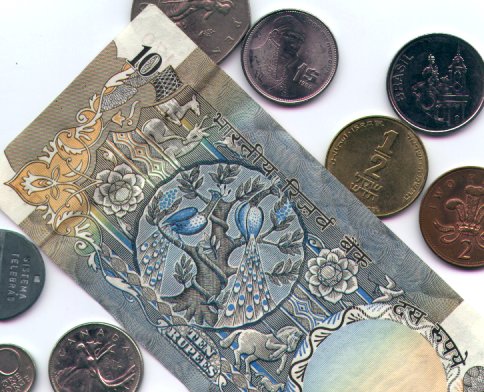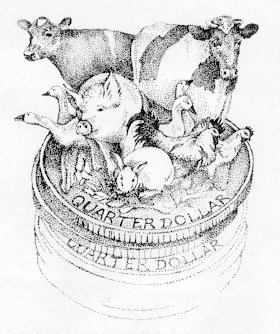Inventing Money
Today, a history of money. The University of Houston's College of Engineering presents this series about the machines that make our civilization run, and the people whose ingenuity created them.
Abstraction is at the root of any invention. And no invention was more abstract than the idea of replacing real goods and services with a medium of exchange. Money is the ultimate abstraction of material things. It represents a mental leap that had to take place in stages. The first stage predated recorded history. As people from different places traded produce, they needed frames of reference to set the value of goods. They started referring all goods to such commonplace merchandise as cattle or metal.
We generalized that process at least as early as 4400 years ago. By then we were using the weights of certain metals, usually gold, silver, or copper, as a reference. The Biblical talent was actually a unit of weight. Fifty or sixty-pound copper talents were a regular medium of exchange around the Mediterranean by the 9th century BC. The original shekel wasn't a coin at all. It was a lump of silver weighing about a third of an ounce
In the next stage, governments certified a particular medium of exchange. The Chinese did that in the 8th century BC, when they put their inscriptions on certain exchange goods. The Ionians began putting their government stamps on talents a century later. The Lydian Greeks minted the first coins just after 650 BC. Coins led to a huge leap in abstraction. Once rulers inscribed a lump of valuable metal with its guarantee of value, that lump began to have value apart from its own substance.
Our phrase "Rich as Croesus" comes from the 5th-century BC Lydian King Croesus, who minted standard coins made of a natural gold-silver alloy. Within a few centuries, Greek coins had reached an artistic level that wouldn't be matched until modern times.
The next stage of abstraction was paper money, a symbol of material goods with no value of its own. The Chinese used private paper notes as early as the 8th century AD. In the 12th century, the Chinese government issued its own paper money. Paper money has been widely used in Europe only during the last 300 years or so.
Now we've taken yet another step in the process of abstraction. We call the whole process of barter into computers. We reduce our balance of cows, autos, and labor to electronic record keeping. At this level, all our goods and services are converted into an agreed-upon figure of merit (call it the dollar or the yen) and weighed against one another in electric pulses. We still barter with each other, but the medium of exchange has, at last, become so abstract as to be completely invisible.
And that cannot be the end of abstraction. We have further to go. More complex measures of value will emerge. The next medium of exchange will surely give trade value to immaterial information. The old term intellectual property, which tries to equate information and property, will give way to something more sensible. But what? It may become clear in my lifetime; I expect it will in yours.
I'm John Lienhard, at the University of Houston, where we're interested in the way inventive minds work.
(Theme music)
Porteous, J., Coins. London: Octopus Books Ltd., 1964.
Money: A history. (Jonathan Williams, ed.) New York: St. Martin's Press, 1997.
This is a greatly revised version of Episode 40.

Image by John Lienhard

Image by Maria Zsygmond Baca, by permission of Peter Gordon